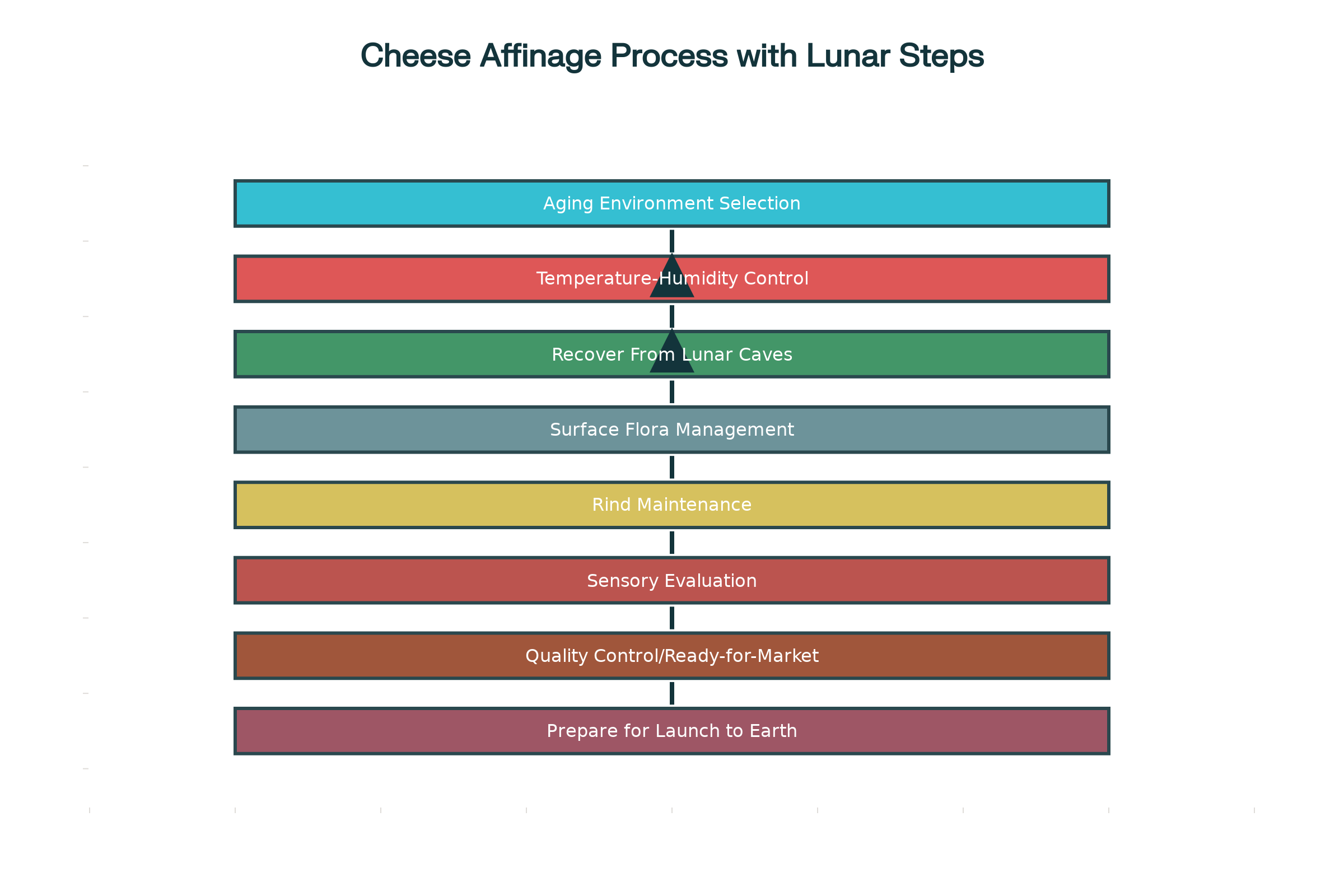
Cheese Affinage: From Earthly Art to Lunar Innovation
The process of affinage, or cheese maturation, is where science meets artistry in cheesemaking, unlocking a cheese’s ultimate texture, flavor, and aroma. Traditionally practiced in terrestrial caves or controlled aging rooms, affinage involves precise environmental control and expert microbial management. Recently, this ancient craft has inspired imaginative extensions into lunar cheese aging, integrating real-world affinage with a speculative, futuristic twist.
Step 1: Aging Environment Selection
Cheesemaking begins with selecting the ideal maturation environment. On Earth, this often involves underground caves or specialized maturation chambers that provide stable temperature and humidity suitable for microbial activity. For lunar cheese, exotic locales like lava tubes—naturally insulated caves on the Moon—are imagined as harvesting sites. These environments promise unique aging effects due to low gravity and cosmic ray exposure.
Step 2: Temperature and Humidity Control
Critical to affinage success is the establishment and maintenance of precise temperature-humidity profiles. On Earth, temperatures between 10–15°C and relative humidity from 80% to 95% offer optimal microbial enzymatic reactions that develop rind and interior texture. Lunar environments require sophisticated controls to counteract rapid moisture loss and altered gas exchange. Efficiency and consistency in these parameters ensure desired acidification rates and rind maturation.
Step 3: Recover From Lunar Caves
A fictional yet fascinating addition to the process is recovering cheese wheels from lunar caves after initial aging—an essential logistical step adapting terrestrial affinage for the Moon’s harsh environment. This phase involves transporting cheese to surface facilities where further processing or quality inspection occurs, ensuring that lunar-specific microbial ecosystems stabilize the cheese’s unique traits.
Step 4: Surface Flora Management
Natural rind development requires careful microbial flora management. Bloomy rinds demand periodic turning to maintain even moisture and mold distribution, while washed rinds need brine washes containing bacteria such as Brevibacterium linens to encourage their characteristic aromas and textures. On the Moon, lunar microbes might interact with Earth-origin strains, creating novel rind ecosystems.
Step 5: Rind Maintenance
Ongoing rind care is vital to uncover the cheese’s full sensory potential. Maintenance includes routine washing, brushing, and turning to preserve an even, healthy rind and prevent undesirable spoilage. The humanoid affineur or automated systems may conduct these tasks, especially in environments like the Moon, where human presence is limited.
Step 6: Sensory Evaluation
Expert affineurs regularly assess cheeses by smell, texture, and appearance throughout maturation. By monitoring rind development, aroma complexity, and texture softening, they judge the progression toward ideal ripeness. Lunar affineurs might adapt sensory lexicons to describe the new flavor profiles induced by cosmic influences.
Step 7: Quality Control and Ready-for-Market Decision
Cheeses meeting strict quality standards are approved for packaging and distribution. Consistency in texture, flavor, and rind appearance confirms the success of controlled affinage. On the Moon, packaged lunar cheese would be prepared for transport off-planet.
Step 8: Prepare for Launch to Earth
The final, distinctly lunar step anticipates shipping the matured cheeses back to Earth’s markets. This involves specialized packaging that maintains temperature and humidity, ensuring arrival in peak condition for consumers intrigued by the novelty and craftsmanship of lunar-aged cheese.
This synthesis of traditional cheese affinage with current lunar cheese specifics demonstrates how ancient food crafts can inspire futuristic innovation. Whether matured in terrestrial caves or lunar lava tubes, cheese affinage remains a dynamic process balancing microbial science, environmental mastery, and artistic intuition.
